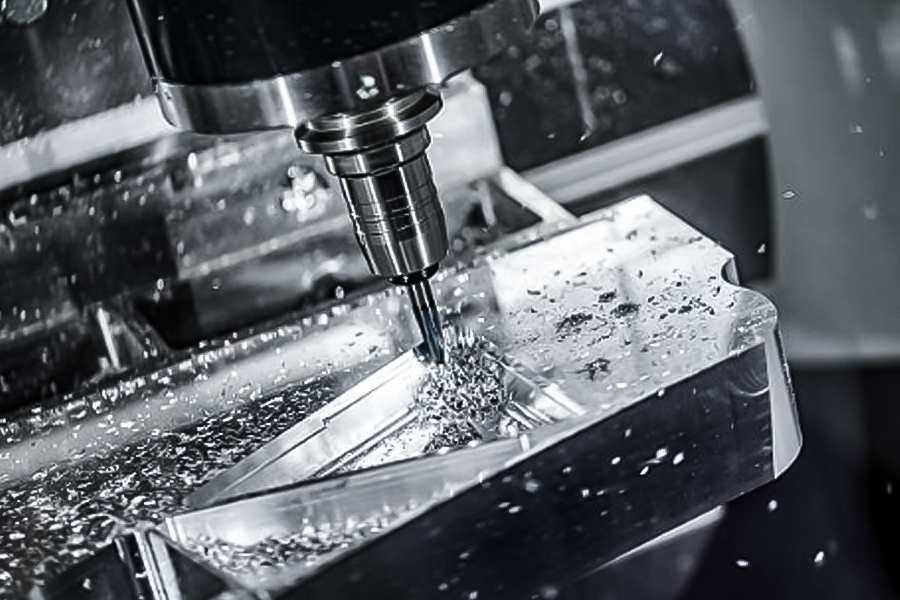Datetime:2025-07-25
In modern manufacturing, precision measurement technology, as a core supporting technology, is driving a leap in machining accuracy. This article will systematically analyze how this technology achieves micron-level accuracy and reveal its key role in precision machining. Specifically, the article will explore the implementation path of measurement technology, the core functions of the machining process, and the synergy mechanism with other supporting technologies. Through these analyses, readers will understand how this technology improves manufacturing quality and efficiency, laying the foundation for subsequent chapters.
The Secret of Precision Measurement Technology
The secret of precision measurement technology lies in how it accurately captures the details of the microscopic world and achieves micron-level accuracy, which is often finer than the diameter of a hair. Through advanced sensors and optical systems, it can monitor tiny deviations in the machining process in real time to ensure absolute consistency in part size and shape. This technology not only supports the core links of precision machining, but is also directly related to the manufacturing quality of the final product. For example, in high-precision machine tool operations, measurement equipment can detect errors of 0.1 microns and provide timely feedback to adjust parameters to avoid scrap. Supporting technologies such as calibration instruments and data analysis tools work together to further improve the reliability and efficiency of measurement.

Path to achieve micron precision
The core of achieving micron-level precision lies in the precise application of precision measurement technology. This first relies on high-precision measuring equipment, such as laser interferometers, precision coordinate measuring machines (CMMs), and high-resolution optical sensors. These devices themselves must have extremely high resolution and stability to capture extremely small dimensional changes. However, precision equipment alone is not enough to guarantee micron-level measurement results. The measurement process must be carried out in a strictly controlled environment, where slight fluctuations in temperature and humidity, or even slight vibrations of the equipment itself, may introduce significant errors. Therefore, an effective temperature control system, a stable shock-absorbing platform, and a clean measurement environment are essential supporting conditions. At the same time, advanced data processing algorithms also play a key role. They can analyze, filter, and compensate for the massive amount of raw data collected by the sensor in real time, effectively eliminating the slight deviations caused by environmental interference or system errors, thereby ensuring that the final output measurement value truly achieves reliable micron-level accuracy, laying a solid foundation for improving manufacturing quality.
Analysis of the core role of processing
Precision measurement technology plays a core role in the precision processing process, which directly determines whether the product can achieve micron-level accuracy. By real-time monitoring of machining parameters and workpiece dimensions, the technology can detect deviations in a timely manner and guide the equipment to make precise adjustments, thereby effectively reducing the scrap rate. For example, in the manufacture of automotive engine parts, the precision measurement system ensures that the dimensional error of key parts such as pistons is controlled within 1 micron, significantly improving the overall manufacturing quality. In addition, this technology also optimizes machining efficiency, avoids resource waste caused by rework, and lays a solid foundation for the collaborative application of subsequent supporting technologies.
Supporting technology synergy value
In the precision machining process, supporting technologies such as high-precision sensors, real-time control systems and data analysis software work closely with precision measurement technologies to achieve the goal of micron-level accuracy. These technologies effectively reduce errors and ensure the accuracy of each link by real-time monitoring of machining parameters and timely adjustments. For example, the automated feedback system can quickly respond to measurement data and optimize tool paths, thereby improving the overall manufacturing quality and production efficiency. This collaboration not only strengthens the stability of the machining process, but also enhances the consistency and reliability of the product.
On the whole, precision measurement technology is by no means an isolated link in the precision machining process, but a core guarantee that runs through and ensures micron-level accuracy. Practice has proved that its precise data feedback is like the "eyes" of the processing process, which not only monitors every slight deviation in real time, but also directly guides the optimization and adjustment of process parameters. This high-precision measurement capability has steadily improved the processing quality of complex parts and significantly reduced the scrap rate. At the same time, it deeply reveals the necessity of working in coordination with supporting technologies such as advanced machine tools and intelligent control systems - it is the deep integration and mutual promotion of these technologies that have jointly built a solid foundation for modern high-precision manufacturing and continuously promoted the overall manufacturing quality and efficiency to a higher level.